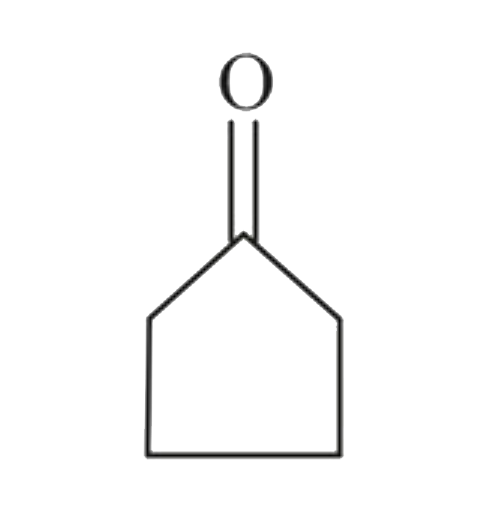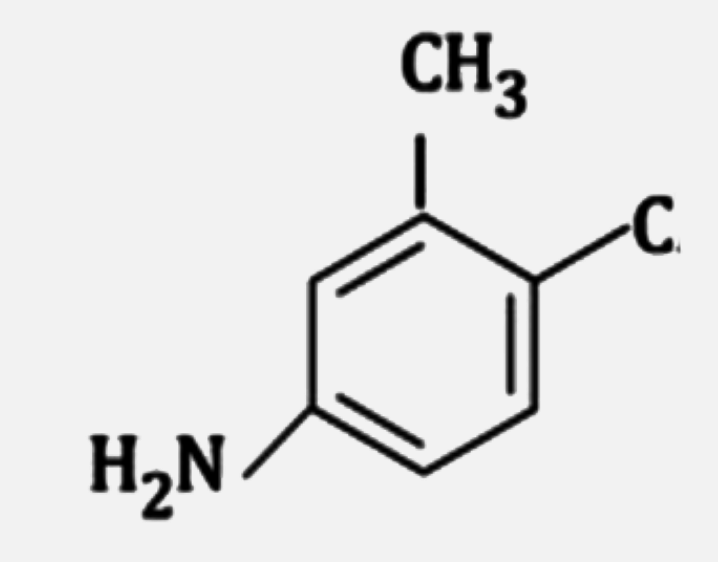Identify the compound (A),(B), and (C).
Compound (A) (C8H12)1mol−−−−−→ofH2/Pd(B)(C8H14)
Doesn not showstereoismerism⏐↓O3/Ph3PSymmetrical diketone(C)(C8H12O2)
Video Solution
Text Solution
D.U. in (A)=(2nC+2)−nH2=(2×8+2)−122=3∘
D.U. in (B)=(2nC+2)−nH2=(2×8+2)−142=2∘
D.U. in (C)=(2×8+2)−122=3∘
In compound (C),D.U.=3∘
2 D.U. is due to diketone.
So, 1 D.U. in compount (C)is due to either one (C=C) bond or one ring of eight C atoms.
One (C=C) bond is not possible because after ozonolysis of (A), the double bond cannot be left behind.
So (C) is 8C ring with two groups at the sysmmetrical position.

|
Topper's Solved these Questions
- ALKENES AND ALKADIENESBOOK - CENGAGE CHEMISTRYCHAPTER - ALKENES AND ALKADIENESEXERCISE - SOLVED Example
62 Videos
- ALKENES AND ALKADIENESBOOK - CENGAGE CHEMISTRYCHAPTER - ALKENES AND ALKADIENESEXERCISE - EXERCISES
29 Videos
- ALKANES AND CYCLOALKANESBOOK - CENGAGE CHEMISTRYCHAPTER - ALKANES AND CYCLOALKANESEXERCISE - Archives
13 Videos
- ALKYNESBOOK - CENGAGE CHEMISTRYCHAPTER - ALKYNESEXERCISE - Exercises (Archives - Analytical and Desriptive Type)
4 Videos
Similar Questions
Knowledge Check
H3C−O||C−O−C∣Ph=CH2+H2ONaOH−−−→H⊕3OX+Y
X and Y are:AX is CH3−O||C−O−CH2−PhBY is HCHOCY is H3C−O||C−OHDX is Ph−C||O−CH3IUPAC name of CH3−H∣C∣C2H5−C4H9∣C∣CH3−CH3 is
A2-Butyl-2-methyl-3-ethylbutaneB2-Ethyl-3,3-dimethylheptaneC3,4,4-TrimethylheptaneD3,4,4-Trimethyloctane.(A)(C4H8O)H3O⊕−−−→(B)CrO3−−−−−→acetic acid(C)CH2N2−−−→Δ(D)
The compound 'D' isA B
B C
C D
D
Write IUPAC Name
CH3−C2H5∣C∣CH3−CH3∣C∣H−C≡C−CH3
View SolutionWhat is the functional group present in the following compound ? Also name the compound .
CH3−H∣C∣OH−H∣C∣H−CH3
View SolutionC8H12O2LiAlH4−−−→H2OB(two mol per mol of A)PCC−−→(C)CH3MgBr−−−−−→H3O+(D)H2CrO4−−−−−−−−→Acetone/water

(A) Identify A to D.
View SolutionCH3−CH3∣C∣∣O(i)CH3MgBr−−−−−−−−−→H2OA
Identify the compound A
View SolutionPh−CH3∣C∣OH−Ph∣C∣OH−PhConc−−−→H2SO4 Product is
View Solution

